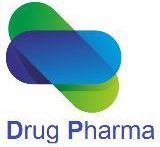
Difficulties with breastfeeding are common, especially in the first week after birth. As a rule, the milk, which is present all the time, ‘comes in’ at any time from 24 hours after birth. It is common for the breasts to become engorged early on, but in some cases, there is insufficient supply.
ENGORGED BREAST

WHAT IS ENGORGEMENT?
In some women, a few days after delivery the milk supply comes on so quickly that the breasts become swollen, hard, and sore.
This is called engorgement. There is an increased supply of blood and other fluids in the breast as well as milk.
WHAT WILL YOU NOTICE?
The breasts and nipples may be so swollen that the baby is unable to latch on and suckle. The soreness makes it difficult for you to relax and enjoy your baby.
HOW ARE ENGORGED BREASTS MANAGED?
- Feed your baby on demand from day 1 until he or she has had enough.
- Finish the first breast completely; maybe use one side per feed rather than some from each breast Offer the second breast if the baby appears hungry.
- Soften the breasts before feeds or expressing them with a warm washer or shower, which will help get the milk flowing.
- Avoid giving the baby other fluids.
- Express a little milk before putting the baby to your breast (a must if the baby has trouble latching on) and express a little after feeding on the other side if it is too uncomfortable.
- Massage any breast lumps gently towards the nipple while feeding.
- Apply cold packs after feeding. Many women use washed, cool, crisp cabbage leaves (left in the refrigerator) between feeds. An opening is left for the nipple and the leaves are usually changed every 2 hours when appropriate. Some women prefer to use hot packs.
- Wake your baby for a feed if your breasts are uncomfortable or if the baby is sleeping longer than 4 hours.
- Use a good, comfortable bra.
- Remove your bra completely before feeding.
- Take ibuprofen or paracetamol regularly for severe discomfort. Remember that regular feeding is the best treatment for your engorged breasts. Follow your demand and your baby’s demand. As your breasts are used in this way, they gradually become softer and more comfortable
INSUFFICIENT SUPPLY
Studies have shown that many women wean because of low milk supply.
The problem is due mainly to lactation mismanagement such as poorly timed feeds, infrequent feeds and poor attachment.
This is sometimes a problem in mothers who tend to be under a lot of stress and find it hard to relax.
A ‘let down’ reflex is necessary to get the milk supply going, and sometimes this reflex is slow.
If there is insufficient supply, the baby tends to demand frequent feeds, may continually suck his or her hand, have hard stools and fewer wet nappies, and will be slow in gaining weight.
Remember that there is always some milk present in your breasts. Mothers tend to underestimate their milk supply.
WHAT SHOULD YOU DO?
- Try to practice relaxation techniques to help condition your ‘let down’ reflex.
- Put the baby to your breast as often as he or she demands, using the ‘chest to chest, chin on breast’ method.
- Feed your baby more often than usual.
- Give at least one night’s feed.
- Express after feeds, because the emptier the breasts are, the more milk will be produced.
- Make sure you get adequate rest, eat well, and drink ample fluids, but if you feel overly tired go to your doctor for a check-up













